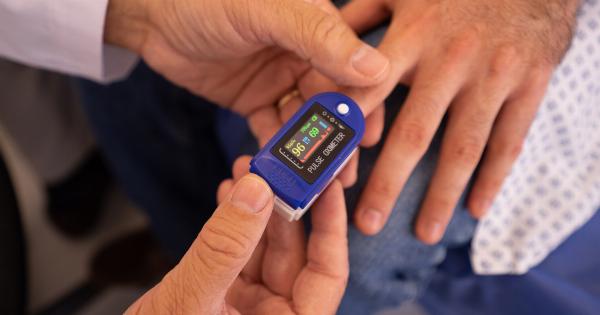Peripheral artery disease (PAD) is a condition that affects the blood vessels outside the heart and brain, most commonly those in the legs.
It is caused by a buildup of plaque in the arteries, which restricts blood flow and oxygen supply to the affected areas. If left untreated, PAD can lead to serious complications, including the risk of amputation. However, there are several interventions available to reduce the amputation risk in PAD patients.
This article will explore some of these interventions and their effectiveness.
1. Medications
One of the first-line interventions for PAD patients is the use of medications to manage the underlying risk factors. These may include antiplatelet drugs, such as aspirin or clopidogrel, to prevent blood clots from forming in the narrowed arteries.
Statins are commonly prescribed to lower cholesterol levels and reduce plaque buildup. Medications to control blood pressure and blood sugar levels in patients with hypertension and diabetes also play a crucial role in managing the progression of PAD.
2. Lifestyle modifications
Lifestyle changes can significantly reduce the risk of amputation in PAD patients. Regular exercise, such as walking or supervised rehabilitation programs, can improve blood flow to the legs and enhance overall cardiovascular health.
Smoking cessation is essential, as smoking damages blood vessels and exacerbates PAD symptoms. A healthy diet that is low in saturated fats and high in fruits, vegetables, and whole grains can also promote better blood circulation and decrease the risk of complications.
3. Angioplasty
Angioplasty is a minimally invasive procedure that involves inflating a small balloon in the narrowed artery to widen it and restore blood flow. A stent, a tiny metal mesh tube, is usually placed during angioplasty to keep the artery open.
This intervention is effective in reducing amputation risk by improving blood flow to the affected limb. However, the results may vary depending on the severity and location of the blockage.
4. Bypass surgery
In cases where the blockage is severe or extensive, bypass surgery may be recommended. This procedure involves creating a detour or bypass using a healthy blood vessel from another part of the body.
By bypassing the blocked artery, blood flow to the affected limb is restored. Bypass surgery is typically reserved for patients with advanced PAD and has been shown to be effective in reducing amputation rates.
5. Transcutaneous oxygen measurement
Transcutaneous oxygen measurement is a non-invasive test that measures the oxygen levels in the skin of the affected limb. It helps assess the severity of PAD and determine the appropriate treatment options.
By monitoring oxygen levels, healthcare providers can make informed decisions about interventions to improve blood flow and reduce the risk of amputation.
6. Wound care and infection management
For PAD patients with foot ulcers or wounds, proper wound care and infection management are crucial. Regular cleaning and dressing of wounds, along with the use of appropriate antibiotics, can prevent infection and promote healing.
Close monitoring of wounds by healthcare providers is necessary to detect any signs of infection or deterioration early on.
7. Hyperbaric oxygen therapy
Hyperbaric oxygen therapy (HBOT) is a treatment that involves breathing in pure oxygen in a pressurized chamber.
This therapy has been shown to increase oxygen delivery to tissues and promote wound healing in patients with chronic wounds, including those with PAD-related ulcers. HBOT can reduce the risk of amputation by improving tissue oxygenation and supporting the healing process.
8. Education and self-care
Providing education and promoting self-care practices are essential in reducing amputation risk in PAD patients.
Educating patients about the importance of medication adherence, regular check-ups, and early detection of complications can empower them to take control of their condition. Teaching proper foot care techniques, such as daily inspection, moisturization, and wearing appropriate footwear, can also help prevent ulcers and infections.
9. Interventional radiology procedures
Interventional radiology procedures, such as atherectomy or thrombectomy, involve removing plaque or blood clots from the affected arteries using specialized devices.
These minimally invasive procedures can improve blood flow and reduce the risk of amputation in PAD patients. The choice of procedure depends on the location and characteristics of the blockage.
10. Multidisciplinary approach
Taking a multidisciplinary approach to PAD management is crucial in reducing amputation risk.
Collaboration among healthcare professionals, including primary care physicians, vascular specialists, wound care specialists, and physical therapists, ensures comprehensive and coordinated care. By addressing various aspects of PAD, such as risk factor management, wound care, and rehabilitation, the chances of preventing amputation are significantly improved.





























